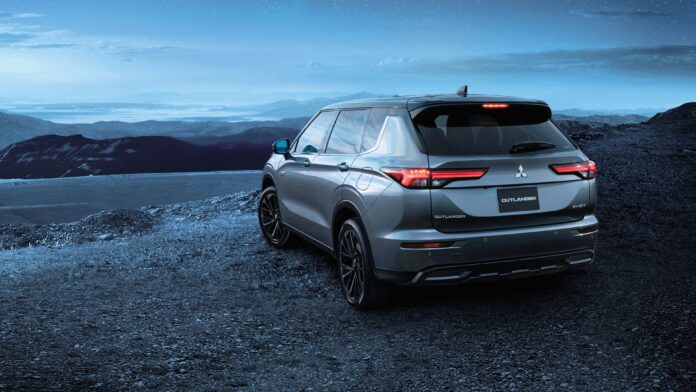Introduction The Mitsubishi Outlander PHEV has gained significant popularity as one of the pioneers in the plug-in hybrid electric vehicle (PHEV) market. It offers an appealing combination of spaciousness, fuel efficiency, and performance. However, like any vehicle, it is not impervious to issues. In this comprehensive article, we will delve into the most common problems reported by Outlander PHEV owners and explore potential solutions. So, if you’re considering purchasing a Mitsubishi Outlander PHEV or already own one, this guide will equip you with valuable insights into the challenges you may encounter.
Mitsubishi Outlander PHEV Battery Problems
The Outlander PHEV’s battery is a crucial component that can experience several problems affecting its functionality and performance. One prevalent issue is the improper charging or overheating of the battery, resulting in reduced range and performance [1]. Premature degradation is also a concern, leading to a shorter lifespan. Regularly charging the battery and avoiding extended periods of idleness can mitigate these problems.
Mitsubishi Outlander PHEV Charging System Issues
Another common challenge faced by Outlander PHEV owners is related to the charging system. Instances of unreliable charging, unexpected shutdowns, or inadequate charging are reported. These issues can arise from a faulty battery, malfunctioning charging port, or defective charging cable [2]. Extreme temperatures and inadequate maintenance can also overwhelm the charging system. Regular inspection and maintenance of the charging components are essential to ensure optimal performance.
Mitsubishi Outlander PHEV Engine Stalling
Stalling engines have been reported as a persistent problem in the Mitsubishi Outlander PHEV. Faulty fuel injectors and clogged fuel filters are often the culprits. Replacing these components can resolve the stalling issue, restoring proper acceleration and performance. Additionally, worn-out spark plugs, a clogged air filter, or a faulty oxygen sensor can contribute to poor acceleration. Addressing these factors by replacing the necessary components can help alleviate the problem.
Mitsubishi Outlander PHEV Powertrain and Braking Problems
Reliability issues in the powertrain system can manifest as stalling or power loss during acceleration [3]. Inadequate lubrication, worn or damaged components, and excessive vibration or noise are some of the factors contributing to these problems. Regular inspection and timely replacement of worn parts can help maintain performance and fuel efficiency.
The Outlander PHEV’s braking system has been known to exhibit unreliability and insufficient stopping power. Noisy brakes and excessive vibration can detract from a comfortable driving experience. Regular maintenance and inspection of the braking system, including brake pad replacement and addressing any issues causing vibration, are crucial to ensure optimal braking performance.
Mitsubishi Outlander PHEV Electrical Malfunctions and Infotainment System Issues
Electrical malfunctions can range from minor nuisances like flickering lights to more severe problems like dead batteries. Faulty alternators, loose or corroded battery cables, or blown fuses can contribute to these issues [4]. Regular inspection and replacement of faulty electrical components are essential to maintain the vehicle’s proper functioning.
The Outlander PHEV’s infotainment system has also been reported to be unreliable, exhibiting insensitivity or freezing. Slow and laggy performance can make using the system frustrating. Faulty wiring harnesses, navigation systems, or audio systems can be the underlying causes. Replacing these components can restore the system’s functionality.
Mitsubishi Outlander PHEV Transmission Problems
Transmission issues have been reported by some Outlander PHEV owners, with erratic shifting or hesitation during acceleration being common complaints. Factors such as low fluid levels, a dirty transmission filter, or a faulty transmission solenoid can contribute to these problems [5]. Replacing or flushing the transmission fluid, replacing the torque converter, or addressing other specific issues can mitigate the transmission-related challenges.
Mitsubishi Outlander PHEV Power Steering Issues
Power steering problems can manifest as unresponsiveness or a pulling sensation while driving. Faulty power steering pumps, worn-out power steering belts, or leaks in the power steering fluid can be the root causes. Replacing the necessary components and ensuring proper fluid levels can restore optimal steering performance.
Mitsubishi Outlander PHEV Heating and Cooling System Issues
The Outlander PHEV has also experienced challenges with its heating and cooling system. Faulty blower motors, malfunctioning thermostats, or defective cooling fans can lead to inadequate temperature control. Replacing these components can restore proper heating and cooling functionality.
Mitsubishi Outlander PHEV Regular Maintenance and Servicing
To mitigate or prevent these challenges, regular maintenance and servicing are crucial. Visiting a certified Mitsubishi dealer for inspections, replacements, and adjustments can help identify and address potential issues before they escalate. By adhering to the manufacturer’s recommended maintenance schedule, Outlander PHEV owners can enjoy a reliable and enjoyable driving experience.
Conclusion
While the Mitsubishi Outlander PHEV offers numerous advantages, it is essential to be aware of potential challenges. Battery problems, charging system issues, engine stalling, powertrain and braking problems, electrical malfunctions, infotainment system issues, transmission problems, power steering issues, and heating and cooling system issues are among the most frequently reported concerns.
By understanding these challenges and their potential solutions, Outlander PHEV owners can take proactive measures to ensure the longevity and optimal performance of their vehicles. Regular maintenance, timely component replacements, and adherence to recommended maintenance schedules are key to minimizing these issues and maximizing the enjoyment of owning a Mitsubishi Outlander PHEV.
Remember, these challenges are not necessarily representative of every Outlander PHEV, and many owners have had positive experiences with their vehicles. With proper care and maintenance, the Mitsubishi Outlander PHEV can continue to be a reliable and efficient choice in the PHEV market.
In case you own an nissan micra car and your nissan micra is giving you trouble, don’t worry! Head to our website and read through the blog on nissan micra car common problems for effective solutions.



